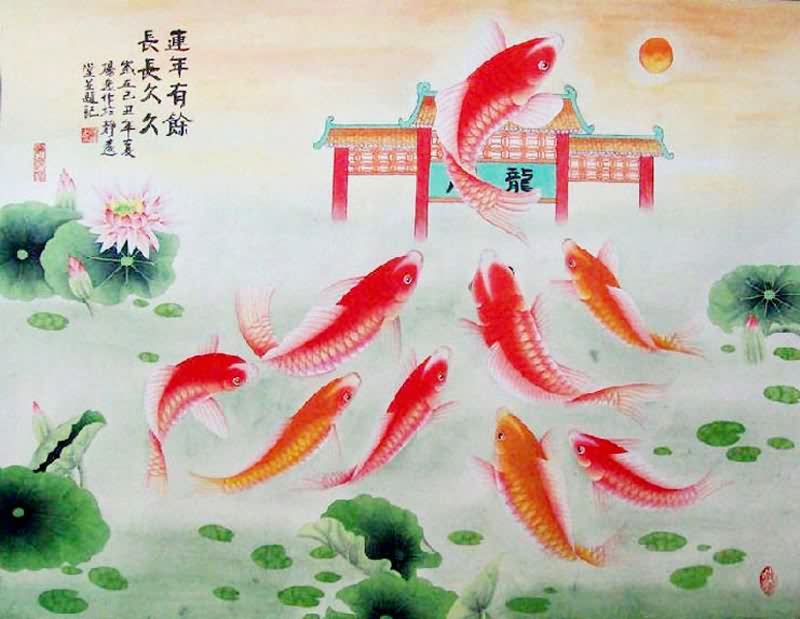Gori the Grey
The Poster
- Joined
- Jan 5, 2009
- Messages
- 11,255
I feel as though @Angst's great post (which was not a derail, but provided a lot of tools for getting at what Hygro wants to discuss) did do a good job of getting at the importance of frames, including the importance of cultural frames of reference. I'll go back and dig out the bits that I thought were making that reference.Here's one that touches on something that I think hasn't been delved into in this thread.
A case against objectivity in art can be found in cultural frames of reference. For example, traditional Chinese art can be difficult to appreciate outside of the particular cultural frame of reference. Traditional Chinese art is full of cultural symbolism, and viewed from a Western perspective (or Western-adjacent ones like Japanese - partly by chance, not just because of cultural diffusion), it might appear repetitive, unoriginal, and garish.
I do not know Chinese art, but I can report my immediate response to the painting you posted is that it strikes as beautiful even by the Western standards that I have (both deliberately and unconsciously) assimilated. I am certain I don't understand it as someone native to that artistic tradition would, but the placement of figures accords to what I find pleasing, the balance of colors is pleasing, the colors themselves are pleasing (all the blues). The chosen shape is not fully in accord with classical western conventions, but not so far outside them as to prevent appreciation of the total composition.
If we were going to seek something objective in the fact that a Westerner can find artistic beauty here, I'd start with composition. I have a starting hunch that the relative placement of the human figures will accord with whatever the most common proportions are for Madonna and Child or Gabriel and Mary in paintings of the Annunciation. I'll dig up the Angst quote that I think is relevant there, too.
Here's Botticelli's Annunciation, for example:
I recognize the same basic compositional principles governing the placement of the two focal figures in the picture you posted, @aelf
This is what I heard Angst saying in parts 5 and 7 of his manifesto:
There would have been some old-fashioned art critic who asserted a "golden ratio" governs the size and relative position of the two central figures in both paintings. No, that's "flying too close to the sun," but:a lot of historic attempts have done mathematical models and made leaps of inductive logic to claim universality
That doesn't mean principles like the golden ratio aren't operative in our aesthetic response to particular works of art.within their own frameworks of creation and observation, the old masters are on god damn point. it's very predictive for educating people for the material process of creating something good. that's the whole point of skil
I'll just list other "Western" aesthetic principles that I feel apply immediately to this piece:
Many of them have to do with balances:
The human figures and their foreground space take up 2/3 of the total "canvas" space, the background 1/3.
The colors of the seated and standing figures oppose but balance. Different colors, the red more simple, the blue more ornate, each of them with a little bit of the other figure's dominant color.
The background primarily in another color, yet, a kind of golden yellow, that lets the foreground figures function as foreground.
Each major figure balanced vertically by a smaller figure
Left v right figures balanced: bearded on the left, beardless on the right.
Three facing mostly out to one facing in.
Not all of them have to do with balance.
I love it that the river is golden and the shoreline blue. (Can't wait to learn what that means to people who have the cultural competency to process the intended meanings of this picture).
Back to balances, though: the river's lines are fluid, the shoreline's rectilinear. The background vegetation is diffuse, the foreground figures sharper in definition. Dark green of vegetation runs along the whole left side; background for the top two thirds, foreground for the bottom third.
Kyr knew to observe a lot of these principles just in the framing of a tourist photo: thirds vertically (green, black and white, blue), one-third, two-third horizontally (black white). Focal figure fully in frame, off-center, made focal by surrounding elements. Tilt the camera a quarter inch (6mm) down and the peaks of your focal figures are suddenly out of frame; tilt it a quarter inch up and blue needlessly predominates.
Last edited:



